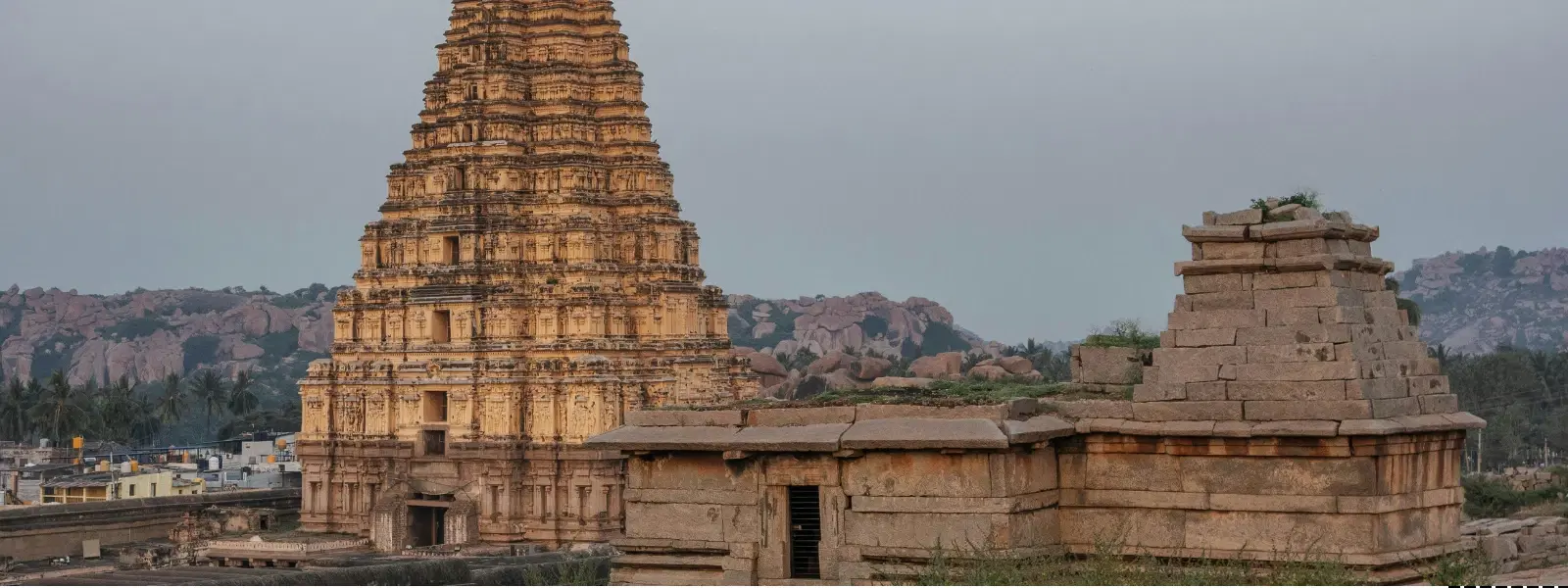
Hotels
•03 min read

The Arasikere Ishvara Temple stands as a shining example of Hoysala architecture, drawing travelers into its intricate world of art and history. This captivating monument, built during the Hoysala dynasty, not only exudes spiritual significance but also showcases an astonishing design that has fascinated architects, historians, and visitors for centuries. In this post, we will explore seven unique features of the Arasikere Ishvara Temple Hoysala unique plan, shedding light on its remarkable architectural elements, from its intricate carvings to its stellar, star-shaped layout.
Constructed during the reign of the illustrious Hoysala dynasty, particularly under the patronage of King Narasimha II, the Arasikere Ishvara Temple was established as a symbol of divine grace and architectural innovation. Dedicated to Lord Shiva, the temple has held deep significance in Shaivism, attracting devotees, scholars, and tourists alike with its perpetual spiritual allure.
This temple plays a pivotal role in preserving age-old Vedic traditions and has influenced regional art and architecture over time. Its close ties to other Hoysala dynasty temples underscore its importance in Karnataka’s cultural heritage, bridging the past with the present. The temple is a treasure trove for anyone seeking a deeper understanding of the rich artistic legacy of the region.
A standout characteristic of this monument is its Pancatala Vimana – a magnificent five-tiered tower. Unlike many other temples, the vimana here is marked by elaborate soapstone carvings that capture scenes from mythology and nature, making this element not only a structural feature but also a canvas for artistic expression.
The temple’s star-shaped, or stellate, layout is a hallmark of Hoysala temple design. This innovative plan departs from the conventional temple structures found in other parts of India, offering both aesthetic beauty and functional elegance. The design symbolizes cosmic order, underlying the temple's spiritual and architectural ethos.
The temple walls and pillars are adorned with detailed carvings that depict a rich pantheon of Hindu deities, mythological episodes, and delicate floral patterns. Every carving is a testament to the extraordinary craftsmanship of Hoysala artisans, who delicately chiseled soapstone to tell stories of faith, valor, and nature.

Noteworthy sculptures within the temple include exquisite representations of Shiva, Vishnu, and other revered figures from Hindu mythology. Each sculpture not only embellishes the temple but also conveys profound cultural narratives, allowing observers to witness the convergence of art and spirituality. The finesse evident in these sculptures truly elevates the overall experience of exploring the temple.
This temple is remarkable for its harmonious integration of diverse religious traditions. Elements of Shaivism, Vaishnavism, and Shaktism blend seamlessly within its walls, symbolizing a spirit of inclusivity and religious harmony. Such a fusion not only reflects the spiritual milieu of the times but also enriches the temple’s cultural persona.
The extensive use of soapstone in constructing the Arasikere Ishvara Temple allowed artisans to achieve an unprecedented level of detail in their carvings. This material, known for its softness and workability, enabled the creation of intricate designs, firmly positioning the temple as a jewel in Hoysala temple art.
The temple's interior boasts gracefully carved pillars and a spacious mandapa (hall), enhancing both its visual appeal and structural integrity. These features not only provide a sense of reverence and grandeur but also serve as a functional space for rituals and gatherings, seamlessly blending art with utility.
Recognizing its historical and cultural significance, dedicated efforts have been undertaken to preserve this architectural marvel. The temple is a protected monument under the Archaeological Survey of India, ensuring that its eternal beauty and history are maintained for future generations to explore and admire.
The artistic brilliance and architectural innovation of the Arasikere Ishvara Temple continue to inspire contemporary architects and artists. Its intricate design and spiritual ambience have influenced modern constructions, fueling a growing interest in Karnataka’s cultural tourism. This legacy further underscores the temple's pivotal role in shaping the architectural narrative of the region.

"Did You Know? The Arasikere Ishvara Temple’s star-shaped layout is not just an aesthetic choice—it symbolizes the cosmic order and the interconnectedness of all life, a concept deeply rooted in Hindu philosophy."
The temple’s star-shaped layout, intricate carvings, and blend of multiple Hindu traditions set it apart as a distinctive monument of Hoysala artistry.
Soapstone enabled the creation of highly detailed carvings and sculptures, showcasing the remarkable craftsmanship of Hoysala artisans.
Built in the 13th century during King Narasimha II’s reign, the temple is a testament to centuries of architectural excellence.
Yes, the temple remains an active site of worship and cultural heritage, drawing devotees and history enthusiasts alike.
Located in Arasikere, Karnataka, the temple is well connected by road and rail, making it an accessible destination for travelers seeking a glimpse into history.
In summary, the Arasikere Ishvara Temple showcases seven unique features that vividly illustrate the brilliance of Hoysala temple design. From the awe-inspiring Pancatala Vimana and the innovative star-shaped plan to the delicate carvings and symbolic sculptures, every element of the temple speaks to a rich cultural and historical legacy. Whether you are a history enthusiast, an admirer of architecture, or a spiritual seeker, this temple invites you to immerse yourself in the artistic heritage of Karnataka and explore the deeper narratives embedded within its walls.